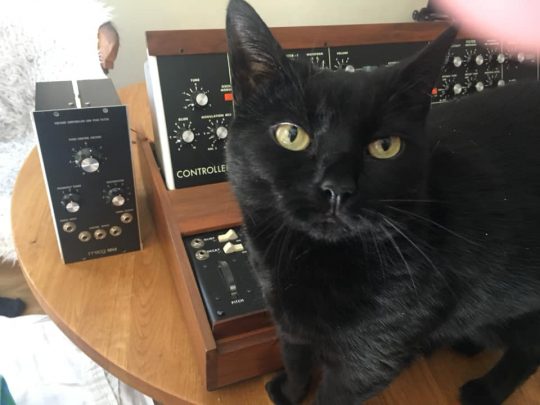
Jet, a beautiful black cat, poses in front of a vintage Minimoog. From Keith Winstanley via Facebook.

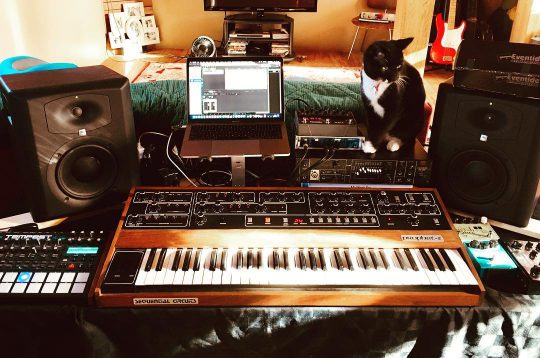
Cat in a studio featuring a vintage Sequential Circuits Prophet 5 along with a more recent Sequential instrument, the Tempest. From barrettmross in Saskatoon, Saskatchewan via Instagram.
barrettmross
Helping produce my cats debut album. #sequentialcircuits #roland#synthesizer #catsynth #vintagesynth#prophet5
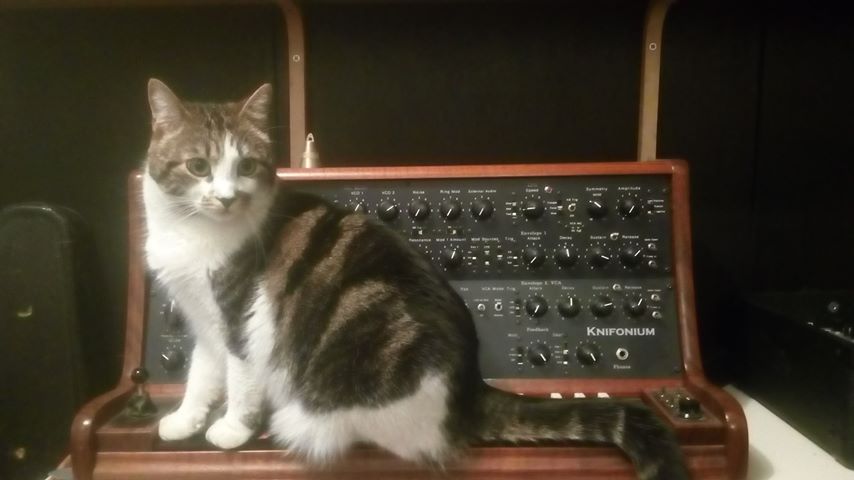
Jackie sits atop a Knifonium synthesizer at Åghström Production Studio in Brussels, Belgium. Submitted by Nicolus Ripitus via our Facebook page.
Exceptional synth under an exceptional pussy cat
We at CatSynth agree on both counts! Jackie is quite regal posing on the synth. And I had never heard of the Knifonium before, but upon visiting the website it sounds quite unique.
Knifonium is a 26 tube monophonic synthesizer with two oscillators, a 4th order ladder filter and a ring modulator.
https://knifaudio.com/knifonium/
Here is a demo of the Knifonium in action.
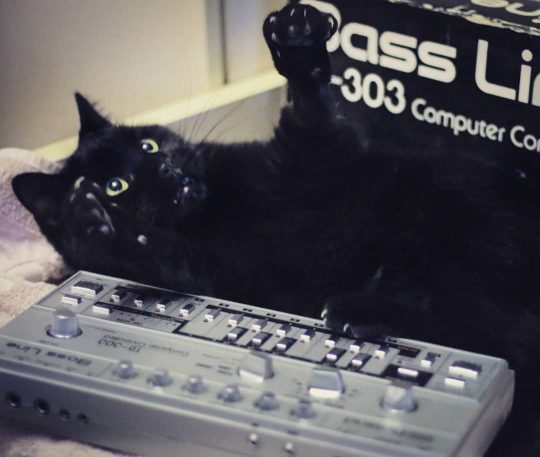
Yesterday was “303” day – the date is 03-03 whether you use American or every-other-country format. And our friend Marcel is posing with a genuine Roland TB-303 for the occasion.
From Eric at polynominal.com via Facebook.
The TB-303 has become a prized instrument, so much so that multiple hardware and software clones have been created to meet the demand. Roland even came out with a TB-03 for its Boutique line.
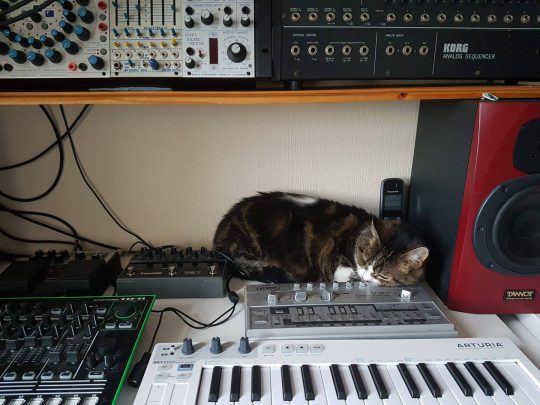
Bonnie has definitely found a nice napping spot in this studio. Submitted by David Lemur via our Facebook page.
Bonnie says: ‘More of John Cage’s 4 minutes and 33 seconds of silence please Donny’.
We see an Arturia Keystep, Roland TR-8, a TB-303 clone, a vintage Korg sequencer, and even a bit of Buchla in the upper-left corner.